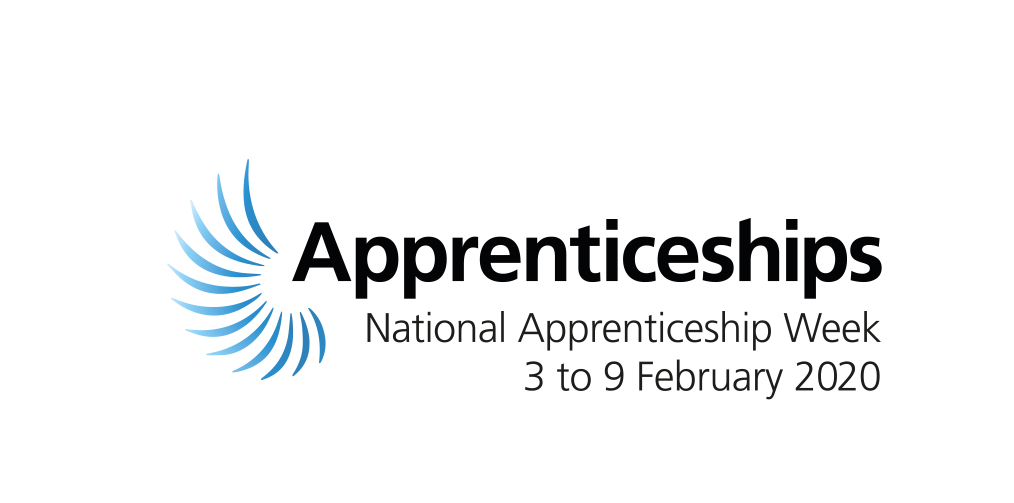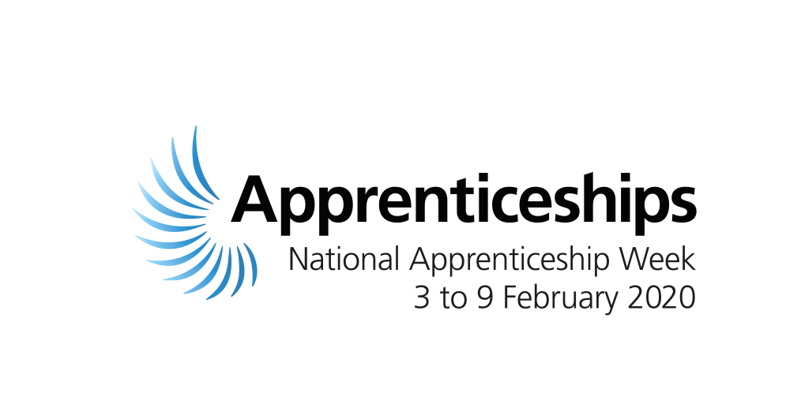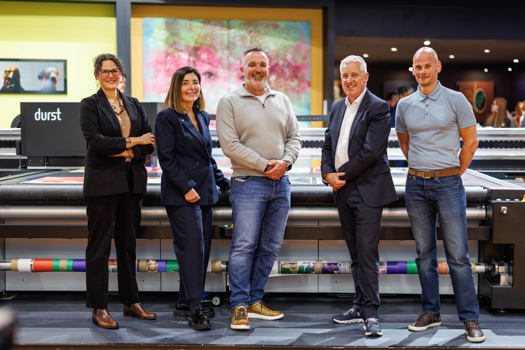During the day, which as usual coincided with National Apprenticeship Week, the apprentices heard from a wide range of speakers, including former and current apprentices. Some speakers shared their journeys, others talked about how print had risen to the sustainability challenge, but throughout the day there was a common thread – the value that a print apprenticeship can offer the next generation and, just as importantly, the value that the apprentices can offer their employers and the industry at large.
To round things off, Printweek chaired a discussion with some of the day’s speakers and the apprentices in attendance. Here are the edited highlights.
Participants
Greg Selfe Country manager, Two Sides
Scott Walsh Digital print technician, University of Derby
Sharon Julian Customer service manager, Graphic Packaging International
Kerry Bradbury HR manager, Graphic Packaging International
Arica Smith Account co-ordinator, Graphic Packaging International
Charles Jarrold Chief executive, BPIF
Neil Lovell Chief executive, The Printing Charity
Darryl Danielli Let’s start off with a quick show of hands from the apprentices. How many of you actively looked for a career in print?
[No hands]
And how many of you fell into by accident?
[All. Laughter]
So that seems like a good place to start. Does the panel think we do enough to promote the print industry in terms of the career opportunities available?
Sharon Julian I don’t think we do. I’ve only been in the print industry for five years and yet I’ve worked for 45 years. And when you actually come into it and you go into somewhere like Graphic Packaging it’s a real eye opener. It makes you look at things completely differently, but then you think you want to inspire other people to come and see what we do.
So, how do you think we can raise the profile of the industry?
Julian I think we’re all making a conscious effort at the moment by working closely with organisations like the BPIF and The Printing Charity. But what we also need to do is probably work closer with other people in the industry and [collectively] invite more people to come and see what we actually do. But it’s new to all of us. We’re just all learning how we can get these young people to be interested, because like the apprentices in the audience, most of them don’t understand what opportunities there are.
Neil Lovell I think that’s the challenge: collaboration. Having a collective approach has always been difficult. Because it’s easier to define, say, retail than it is print. So actually, I don’t know if that’s a winnable battle, as there probably isn’t enough marketing budget combined to be able to get that message across. I don’t think, [that you would be able] to create the brand of ‘print’, because it’s not just one thing. But what we can do is communicate this idea of excitement and energy around the careers people can have in print.
Charles Jarrold There isn’t, unfortunately, a silver bullet. But I do think there’s a lot that we can collectively do. What we’re trying to do as a trade association, particularly Ursula [Daly, BPIF programme director], is to make it easier for employers to engage with schools. So, we’re trying to pull together everything that goes on in the industry from The Printing Charity to employers, and put it into one area of our website that says: here’s how you engage with schools, here’s some presentations, here’s some information from Two Sides. So that people don’t have to go around hunting for things. That’s one thing, and I think it’s helpful, but it’s iterative; what I mean is we need feedback, we need people to go on there, have a look, and say have you thought about this, have you thought about that and, then, we will try to do more.
Kerry Bradbury We have a leaflet that we give out which is called ‘Careers in the Life of a Carton’. We give it out to parents, schools, teachers, anybody really – just to help them understand. Because we need engineers, IT people, health & safety and so on. They’ve been really helpful.
Let’s ask the younger members of the panel, what do you think we could do to have better engaged with you when you were making career decisions?
Scott Walsh Well, personally, I found that if you didn’t want to go to university then they [the school] didn’t want to know really. I wasn’t especially academic, so I didn’t really know what I wanted to do when I left school. And if you were in that position, then you were pushed into construction or engineering, which is fine, if you’re that way inclined, but I wasn’t. So, I struggled. There wasn’t a lot of help or support for me when I left school. I knew what I wanted: I wanted to go out and earn money, but without guidance it’s very easy to end up getting stuck in a dead-end job rather than a career.
And what was your experience Arica?
Arica Smith I think it’s definitely worth going into schools to talk to students, because when you’re younger you get pushed towards hair and beauty if you’re a girl and construction if you’re a boy. There was never anyone from print there talking about the opportunities. When I was at school we used to have PSHE [Personal, Social, Health and Economic] days, well why not include work experience in those. Because there is such a variety of jobs within the industry that no one outside of it understands. In fact, I probably still didn’t properly understand it myself until I went to the Print Future Awards and met some of the other winners from all different roles.
Do you think we need to better engage with parents too?
Smith Well, I only started because my dad is the finishing manager where I work now. So I kind of toppled into the industry because of that. It’s simple really, if you have parents in the industry then you’ll know more about the industry and are more likely to go into it, but if you haven’t then you’re not.
So it’s word of mouth?
Smith Exactly.
Lovell But even that used to be much stronger in the print industry, didn’t it? You went in because [historically] your father and his father before worked in it, but as those links have separated out somewhat there’s not that direct route. There are some young people, like Arica, that have a relationship to the industry, but certainly not as many people as there used to be.
And the type of roles are changing too, the roles of today are very different from those of 20 years ago. But if the onus is kind of on us to talk about the industry and its many opportunities, do you think we have the tools to be able to do that? I mean do you talk proudly when you tell people what you do for a living?
Julian Absolutely. But we don’t talk widely enough about it. And that’s the problem. I live down the road [from GPI], and never really knew anything about it. So, if you don’t get out into the community and educate people, how will they know what’s on offer? So maybe we all need to shout a bit louder and go out and broadcast what we do in the print industry. As businesses, it’s our job to go out and educate the next potential workforce really about all of the career opportunities we’ve got to offer.
Jarrold I agree, it’s about highlighting those opportunities. We try and do some of it; there’s an apprentice event in Leeds tonight and there’s one in London that we do as well. And again, we try and make it easier for member companies to come along and exhibit at them. But actually I agree, I think there’s only so much that we as a trade association can do. I think what we need to try and do is help businesses in the industry speak to schools in their area. We can’t go into every school, we haven’t got the resources, but we can make it easier for employers to do that.
Attracting apprentices to print is just one side of the coin though, Charles, is it also a challenge to get employers engaged with apprenticeships?
Jarrold It’s slightly binary. Some are really active and engaged and do it brilliantly, like GPI and Hobbs, who both spoke earlier today. Everyone feels very strongly that it’s a good thing, but not everyone actually is prepared, or able, sometimes, to put the time and effort into doing it. Although I think it has got better. I know that people are occasionally critical of the Apprenticeship Levy, but that has raised the profile of apprenticeship training across the board. So, the direction of travel is probably right. But on the other hand, a lot of our industry are quite small organisations where they are fighting every day to get orders out of the door, and they just don’t have the kind of headroom and the time to do what they really want when it comes to taking on apprentices.
But do they represent the bigger opportunity, because if the vast majority of companies in the industry employ fewer than 20 staff, that’s a massive potential employer base there that might struggle to ever get involved with apprenticeships?
Jarrold We’re currently training nearly 600 apprentices. So, I think the industry shouldn’t be too hard on itself; it is quite good at it. And there are lots of quite small companies putting considerable resources into apprentice training. So it does happen, it’s just how can we do more of it and. And actually, the perennial challenge is not just the training itself, it’s finding really enthusiastic people to come in and actually benefit from that training. The career routes are there, the training is there, the will is there and, often, the funding is there – but how do we get on the radar for people to come into the industry? Everyone here kind of stumbled into the industry and had a great time, but that’s not that unusual compared to lots of other industries, actually.
What does the audience think?
Mike Forrest [head of communications, Antalis] Charles has already touched on this, but it needs to be unrelenting as a focus. Yes, it is a lot of work actually building an apprenticeship programme, but the fruits are really there if you stick with it. I really don’t think that this depends on the size of your business. Printers I visit often still talk about succession planning. It used to be talked about in terms of the son or daughter, and that was succession planning. That’s not the case anymore. Companies have to look at other options, and bringing in young talent that might one day want to take on the business is one of those options.
Jarrold Also having an apprentice in an organisation is such a strong signal to the rest of the organisation about the future.
Karly Lattimore [managing director, BPIF Training] Absolutely. It was interesting what Scott said too. We as an industry can do a hell of a lot, but if schools are taking a young person who’s not necessarily academic and forgetting about them, then I think there’s so much that schools have to do as well. They are regulated, just like a training provider. They have a duty of care to give a range of experiences to non-academic and academic individuals, but if they’re not doing that then we can do all that, but we’re not getting that pipeline [of young people looking to join the industry]. We have challenges with the government too, with the removal of the Level 2 [apprenticeship scheme] without a replacement. [And] the finally approved Level 3 [scheme], that’s now in another consultation about whether we can continue to deliver that. So, we’re up against some barriers. But yes, we can do a lot, but we need everyone else doing their job too.
Getting back to the earlier point though, I think we touched on the fact that often the best advocates for apprenticeships in print are the apprentices themselves. So, perhaps I can throw this one to one of the apprentices in the audience: What do you think we could have said to you, three years ago, two years ago, five years ago, whatever, to encourage you to enter the industry?
Apprentice If you told me three years ago that I’d be where I am right now, I wouldn’t have believed you. As many people have touched on, if someone had actually told us back then the opportunities that there are in print then that would have been a start. The three of us here work in production, but that doesn’t mean we’ll stay in production, we could go on to client services, design related roles, anything – but you don’t realise that until you’re ‘in’ the industry. When someone says to you come and work in print, your immediate reaction is that you will be working in a factory, but there’s so much more to print to that – and I think that’s one of the big misconceptions that people have. If I had known that three or four years ago then I would probably have had a much different outlook on the entire industry as a whole, not just in terms of my own career path, but on everything. I think that’s the key: telling people about the range of opportunities in print. Because if we don’t tell people, they don’t know and we will lose them.
Louisa Bull [national officer, Unite the Union] And we can’t just look outwards. I think [part of the problem is] often our members have dissuaded their children from becoming an apprentice. Because for the past 10-15 years the industry has been through a lot of turmoil and had a belief, almost, that it is dying. It clearly isn’t, but I think a lot of our members will say they have not encouraged their children because they didn’t feel it had a future. So, to go back out again and say to everybody and say: there is a future, but they are just different roles and the type of job your child may be doing will probably be very different from yours. And that’s probably true in any industry. And the fact that a lot of these new roles are much more secure long-term jobs with genuine career prospects is not a message that a lot of my members would hear at the moment and believe – so they’re probably still discouraging a lot of the people that in the past would have joined the industry. But the truth is there are a lot of jobs and opportunity still in print, and a lot of people would value that, but we’ve probably frightened them off. We do have to look at the challenges in the industry, but we sometimes forget to talk about all the successes.
That’s true, and if you look at things like AI and how that’s going to change industries over the next few decades. Yes, print has always gone through dynamic change, whether it’s been driven by technology, people, or data, but there are still opportunities and will remain opportunities for a long time. Whereas you look at some of these other sectors, there are entire job functions or even industries that are going to be wiped out in the coming decade.
Jarrold And we don’t know quite where they are. And that’s why I think it’s so important to have high-quality apprenticeship training that provides a foundation for people, whether they stay in the industry or not. We need to be confident and say we hope and think they will, but we need to continue to [work to] get to the point that people recognise a print apprenticeship is a great thing to do. And we’re pretty close to that, closer than most. I’ve got teenage children and I’ve got no idea what the right career choices will be in five years’ time, but I do know that some sort of vocational or professional training will stand them in good stead.
And they’ll develop transferable skills that will hopefully be relevant in whatever career or industry.
Lovell And that’s why we’re pushing soft skills this year, because they’re so important.
And that’s probably because the older generation like me, had a job when we were at school, where we developed a lot of those skills – but kids don’t have the same opportunity today. So actually developing those skills on an apprenticeship, where you could end up with a comparable qualification as a graduate and also have four or five years’ work experience under you belt too, is incredibly valuable. We’re running out of time though, so final question to the panel: what one thing can we change about the industry, or how we communicate about the industry to make it more attractive to the future workforce?
Greg Selfe I think it’s about building its reputation, building its image, talking about how it is sustainable. Talking about how many career opportunities there are in print and paper. The fact that there are so many different aspects to working in print, and what we’ve learned today is that so many people just aren’t aware of that. The same can probably be said of many industries, they face the same challenges, but some of those have the benefit of orchestrated campaigns to support them, whether it be teaching, engineering, construction – who you often see advertising on TV. Those kind of budgets are probably a little outside of the print industry, but there are other ways to build awareness of what opportunities there are available within the industry.
Walsh Communication. I think the key is to communicate to people the opportunities and let’s be passionate about it. I think print gets lost when young people think about their careers, so we need to work on that.
Julian I agree, think raise more awareness in schools, at the right age, that university isn’t the only option.
Bradbury I think we also need to change the perception that working in print is just about working in a factory. That’s an important part and offers some great careers, but if you look at our business across the road, it employs 410 people, only 270 of those work in production – the rest work in the office, or off-site. So we need to talk about the bigger picture of the roles available.
Smith I think it has to be about going into schools and talking to young people about what the industry is really like, what the real opportunities are.
Jarrold If I could wave a magic wand it would be for people to see the industry how it really is, not how they think it is. There are a range of career options that go well beyond what people think.
Lovell The benefit of being last, everyone has already said what I want to! [Laughter] I think we need to share more, show off more – we should be shouting about the opportunities whenever we can.












